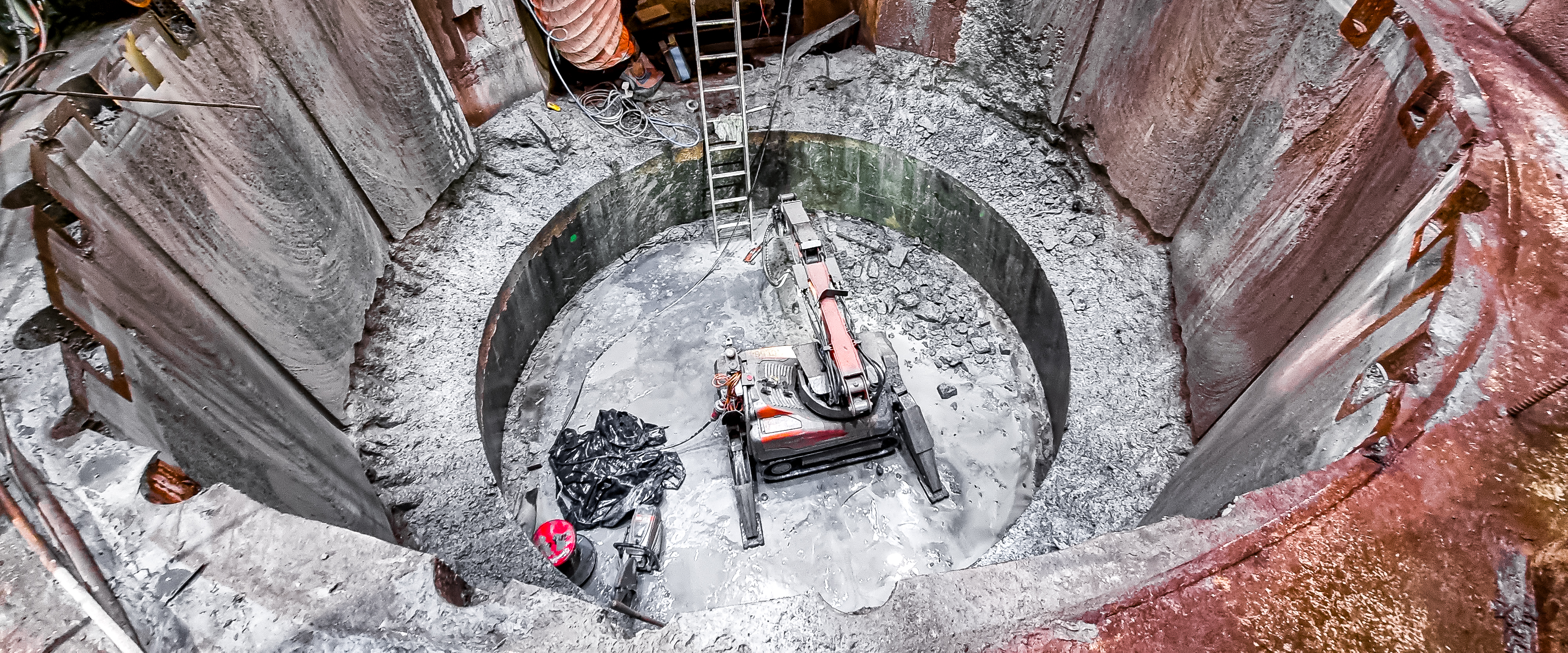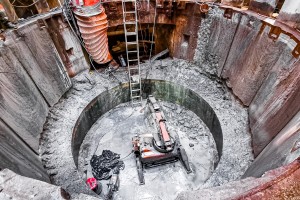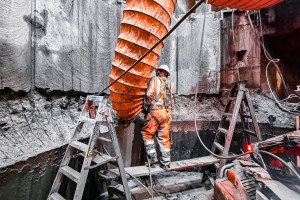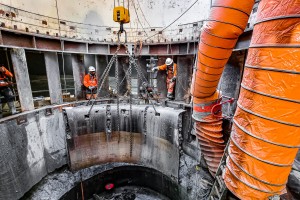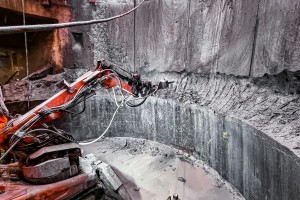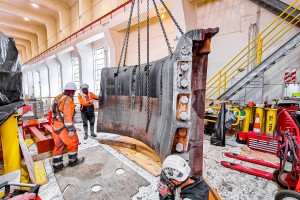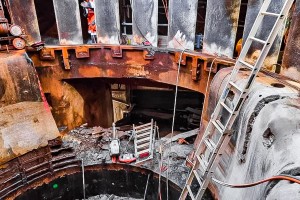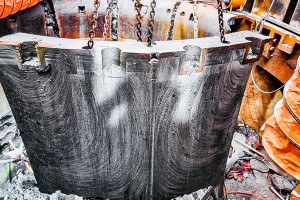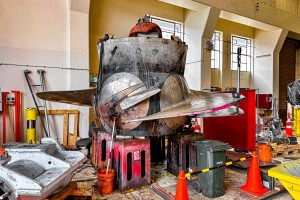KARAPIRO DAM – PRECISION SHAFT DECONSTRUCTION FOR MERCURY ENERGY
PROJECT OVERVIEW
Nikau was proudly engaged by Mercury Energy to undertake a groundbreaking and award-winning deconstruction project at Karapiro Dam, one of New Zealand’s critical hydroelectric facilities. The objective: safely remove and replace the discharge linings buried deep within the operational infrastructure of the dam.
The works involved the systematic deconstruction of two 17-metre-deep, 5.8-metre-wide steel and concrete discharge shafts, with an emphasis on safety, technical innovation, and environmental control. These confined, high-risk spaces demanded a level of precision and coordination rarely required in demolition.
From planning through to execution, this project set a new benchmark in confined-space deconstruction, combining robotic technologies, advanced ventilation systems, and engineered lifting strategies to deliver a solution aligned with Mercury’s safety-first values and commitment to engineering excellence.
SCOPE OF WORKS
Nikau’s role in the Karapiro project involved a range of complex, interlinked activities:
-
Deconstruction of steel discharge rings coated with epoxy resin linings
-
Controlled demolition of embedded reinforced concrete within the turbine discharge chambers
-
Management of confined space access, including emergency rescue readiness and safe working protocols
-
Use of gantry crane systems to lift segmented concrete and steel pieces from the shafts
-
Slurry and debris control, preventing cross-contamination within the operating plant
-
Integration with Mercury’s operational requirements, ensuring minimal disruption to ongoing station activity
This project required a high level of coordination between Nikau, Mercury engineers, confined space specialists, and lifting supervisors to ensure full compliance and operational safety in every phase.
INNOVATIVE TECHNIQUES & METHODOLOGY
This project showcased Nikau’s ability to integrate cutting-edge demolition techniques with stringent engineering and safety standards:
ELECTRIC ROBOTIC DEMOLITION
To reduce fumes and improve safety in the enclosed shafts, electric-powered Brokk robotic units were lowered into the chambers. These machines carried out precise concrete breaking with minimal vibration, enabling safe dismantling of structures while avoiding damage to surrounding infrastructure.
PRECISION CONCRETE CUTTING
Diamond wire saws and hydraulic track saws were employed to segment reinforced concrete into manageable blocks. These machines were chosen for their low noise, low vibration characteristics, which made them ideal for use within confined shafts and near sensitive mechanical structures.
GANTRY CRANE LIFTING
Nikau utilised the site’s existing gantry crane to rig and lift heavy steel and concrete elements from within the shafts. This required precise coordination of load calculations, rigging plans, and lift sequencing to ensure the integrity of both the structure and surrounding working areas.
ADVANCED VENTILATION & FUME EXTRACTION
To combat the build-up of dust, slurry mist, and cutting fumes, Nikau installed an engineered system of ducted ventilation fans and high-capacity extractors. This maintained continuous airflow, protecting workers and maintaining visibility within the shaft during cutting and breaking operations.
EPOXY-COATED STEEL MANAGEMENT
Steel discharge rings were coated in hardened epoxy resins, requiring the use of specialised tools and abrasive techniques for cutting and removal. Personnel working in these areas wore full RPDs (Respiratory Protective Devices)and operated under tight PPE control and decontamination protocols.
HEALTH, SAFETY & ENVIRONMENTAL CONTROLS
Delivering this project safely was a core success factor. Working in vertical shafts with single-point access presented unique challenges that were met with robust planning and risk management.
Key Safety Measures Included:
-
Confined Space Entry Permits, including pre-entry atmospheric testing and stand-by rescue personnel
-
Continuous gas monitoring, dust suppression, and fume extraction
-
Fall protection systems and vertical rescue protocols
-
Tool tethering, PPE compliance, and environmental containment
-
Rigorous coordination of crane lifts with real-time communication and exclusion zones
-
Noise and vibration monitoring to prevent impact on live assets or structural elements
All works were undertaken in strict alignment with Mercury’s HSE guidelines, with daily toolbox talks, hazard reviews, and supervisor inspections embedded into the process.
SUSTAINABILITY AND MATERIAL MANAGEMENT
Nikau remains committed to sustainable deconstruction practices, even in the most constrained environments. In this project:
-
Concrete debris was crushed, stockpiled, and made available for future civil works
-
Steel components were recovered and sent to licensed metal recyclers
-
Wastewater and slurry were contained within bunded zones, pumped out, and treated off-site
-
Epoxy materials and hazardous waste were safely managed under hazardous substances protocols
Through these efforts, Nikau achieved high waste diversion rates, minimising environmental impact and demonstrating leadership in sustainable industrial demolition.
PROJECT LEGACY
The Karapiro discharge shaft deconstruction project has become a showcase for innovation in confined-space engineering. Nikau’s tailored approach – integrating robotics, engineered access, environmental management, and safety leadership – transformed a high-risk challenge into a model for success.
This project reflects our ability to work within New Zealand’s most critical infrastructure, delivering excellence under pressure and ensuring long-term value for our clients.
Talk to Us
Planning a high-risk deconstruction or infrastructure project? Nikau brings the expertise, technology, and commitment needed to safely deliver complex work scopes in any environment.

